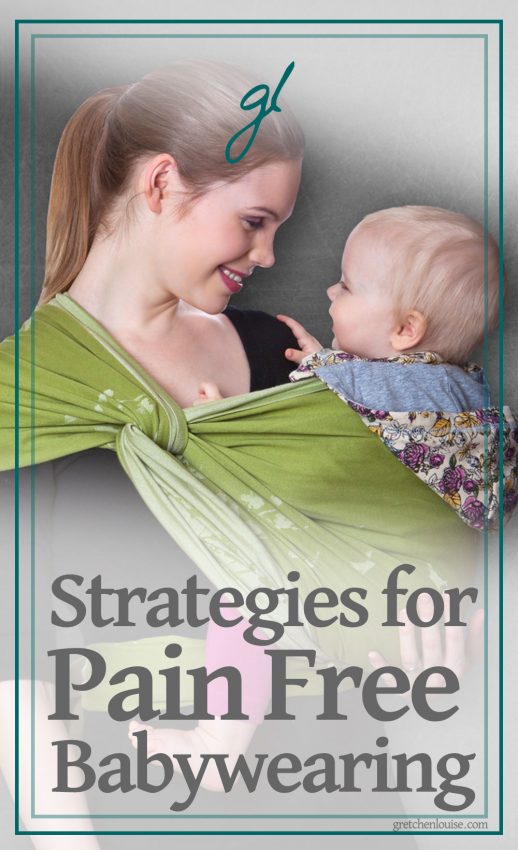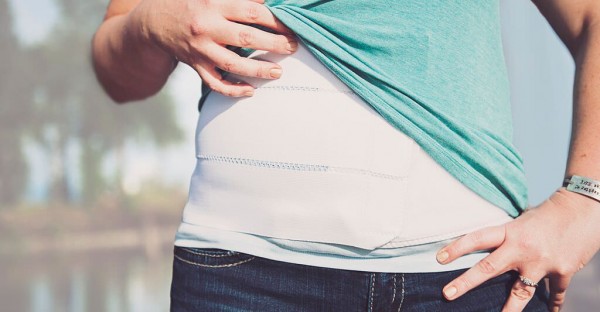Babying Your Core: Strategies for Pain Free Babywearing
(This post contains affiliate links. Read my full disclosure.)
by Kelly Dean, MPT
The Tummy Team
At The Tummy Team we have the privilege of working with thousands of moms every year. Our passion is to help our clients be strong for the life they were meant to live. It is much more comprehensive than a series of exercises or a list of do’s and don’ts. We truly want to help you restore your core and, as a result, help you reclaim your true self.
Motherhood becomes an inherent part of your identity at the moment of conception, if not before. Being able to love, nurture, and raise your children becomes paramount. But motherhood, as rewarding as it is, can be physically challenging. It is a workout in and of itself just to carry the baby for nearly 10 months. The strain on your body continues after birth while you bounce, rock, walk, and sway your newborn to soothe and comfort them to sleep. These challenges persist into toddlerhood when you are lifting kids in and out of cribs, car seats, and strollers. It is a workout to do all of this with minimal sleep, little alone time, and a weak, deflated, and disconnected core.
In this season, babywearing often becomes your respite and your baby’s refuge. Sweet relief comes when the weight of baby can be shifted from your tired arms, freeing your hands to make dinner, pick up groceries, or help other kids. Babywearing allows you to snuggle your baby and keep them close and connected as they transition from the womb to the world.
However, babywearing can quickly create new issues in your strength and health which no longer make it a relief to moms. To fully understand the physical demands that mothering postures place on your body, we need to understand two things: how your body was designed and what happens to your core during and after pregnancy. Only then can you know how to best take care of yourself while you are taking care of your family.
Your body is beautifully designed. Everyone has a natural corset called the Transverse Abdominis (TA) which is the innermost layer of your abdominals. This muscle begins along the sides of your spine and wraps around your body. It attaches at your sternum, your lower six ribs, and along your pelvis all the way down to your pubic bone, making it the largest and most vital of your abdominals. Just about every time you move a limb this muscle is enlisted.
When your TA is functioning as it was intended, it does a variety of things. Specifically, it knits your body together, elongates your torso, supports your organs, stabilizes your spine, and connects your rib cage to your pelvis. Unfortunately, the TA can stretch during pregnancy and becomes difficult to engage; this is even more likely with consecutive pregnancies. Making matters worse, most fitness routines overlook the TA muscle leading to it resembling a collapsed, deflated balloon around your middle instead of a tight corset. Nonetheless, you NEED this muscle!
When any muscle is stretched and then ignored, the muscle becomes weaker over time. We call this “disuse atrophy.” Disuse atrophy of your transverse often forces your body to recruit other less effective strategies to attempt to hold you together while you hold your baby. These alternate strategies are often revealed in a tight and achy mid back (the bra strap area), tight hamstrings and glutes (the gluteal muscles make up the buttocks), an achy lower back, pelvic instability, and even sciatica. In addition, if the TA is weak and the body is constantly placed in challenging postures (like holding or wearing babies for long periods of time) then more symptoms may arise. These include leaking pelvic floors, headaches, hip and knee issues, abdominal pain, constipation, and more. This is serious business.
The Solution
What are you supposed to do? You are weak and tired but your baby needs you and the carrier may be your lifeline to survival. Contrary to what some may think, The Tummy Team is not anti-babywearing; but we are opposed to ignoring pain. There is a way to find a balance. There is a solution to restore your core and be the mom you long to be.
Step 1: Heal and Rebuild
First we would like to address the things you can control; specifically, nursing posture, sitting in the car, moving in and out of bed, and how you stand when you are not holding the baby. Everything adds up and even small changes can be valuable in the healing process. What you are doing with your body when not babywearing will help tremendously when you choose to wear your baby. Our programs highlight this in specific areas of your life, but for this article we will simply say that every opportunity you have to elongate (as if a cable is pulling the crown of your head toward the sky) is important.
We tell our clients, “Your body is a use it or lose it system.” If you are constantly in a collapsed, rounded posture, your core muscles will remain inactive and won’t be useful when you need them. This is why The Tummy Team has a very comprehensive step by step program to help you fully rebuild your core in a way that impacts everyday life.
Step 2: Moderation and Variety
Even several shorter episodes of wearing the baby throughout the day is better than several hours at once on your body. Our recommendation is to limit wearing the baby in any carrier to 45-60 minutes at a time. Extended babywearing (for baby naps, walking or hiking, or during household chores) when you have a weak core can lead to a multitude of medical issues for mom. Variety is also important. Sitting, standing, and changing the positions of both you and of the baby can help to spread the work among different muscles, which eliminates one muscle taking all the damage.
Step 3: Abdominal Splint
Another step would be to consider using an abdominal rehab splint when using a carrier or wrap. The Tummy Team sells a number of different sizes and styles of abdominal splints that may be helpful for this. When used as recommended, the splint is a portion of core rehabilitation and can act as your temporary transverse. Think of the splint as training wheels for your core. Your core is already required to work all day. Splinting can help support your weak core which will allow you to tolerate the physical demands of babywearing. However, remember that in the same way using training wheels will not teach you to balance a bike, splinting alone will not rehabilitate your core. The abdominal rehab splint is useful to help support your elongated posture until you are able to hold yourself up without it. The splint is never an excuse to do something you are not strong enough to do; it is a support to help you do what your body needs to do while you are rebuilding your strength.
Step 4: Listen to Your Body
Babywearing can be an amazing experience for some, and a frustrating and overwhelming experience for others. Just because someone else can wear their baby without pain doesn’t mean you can; and you are no less of a mother for it! Unlike common thought, this is not a “no pain, no gain” situation.
When you experience pain, your body is telling you something is wrong and begging you to fix it. While you get to choose whatever is right for your family and parenting style, just make sure you nurture and invest in your own health and strength as well. Motherhood is a marathon and you need to pace yourself. What your baby needs most is a strong and healthy mother.
Step 5: Consider Core Rehab
The physical demands of motherhood are often beyond what we expected. Babywearing can be mutually beneficial at first, but without proper core strength it could lead to medical issues you may not expect. While the above steps may help reduce pain, the best long term solution would be rehabilitation of your core muscles. Our passion at The Tummy Team is to help you understand how your body was designed and give you effective and realistic strategies to be strong and pain free for the life you were meant to live.
If you suspect your body has not responded well to babywearing, we want to encourage you to try our program by offering a discount on our Core Foundations and Prenatal Core Foundations Online Programs.
For 15% off, use promo code: BABYWEARING
For more information, find us online:
www.TheTummyTeam.com







Every line of this article was so encouraging and informative, and confirms everything my body has tried to convey to me about baby wearing. I was in chronic pain a year ago at this time, largely due to not listening to my body and overwearing my baby. After I went through Kelly’s rehab, the back pain has not returned, even after my fifth pregnancy and now wearing a VERY heavy 3 month old. Caring for my core so I can carry my babies was the best decision I made for my back! I love the Tummy Team!!!
Thank you so much for this advice, Kelly! When I began babywearing, it was to prevent further injury of my arm and wrist (they were going numb from constantly carrying an infant carseat and holding my body at a strange angle while I juggled the baby). But what a good reminder to be sure that we don’t delay postpartum recovery or further injure ourselves by our babywearing methods.
I find that I am actually more able to engage my core while babywearing. When I’m holding the baby without a wrap or carrier, I tend to pooch my stomach to balance the baby instead of engaging my core tightly. Having the wrap firm around my waist is a good reminder to engage my core, and takes the pressure of supporting the baby off my stomach.
I so appreciate you taking the time to guest post here and share your expertise. I am grateful for how you help us moms in our postpartum healing and recovery of our body image!